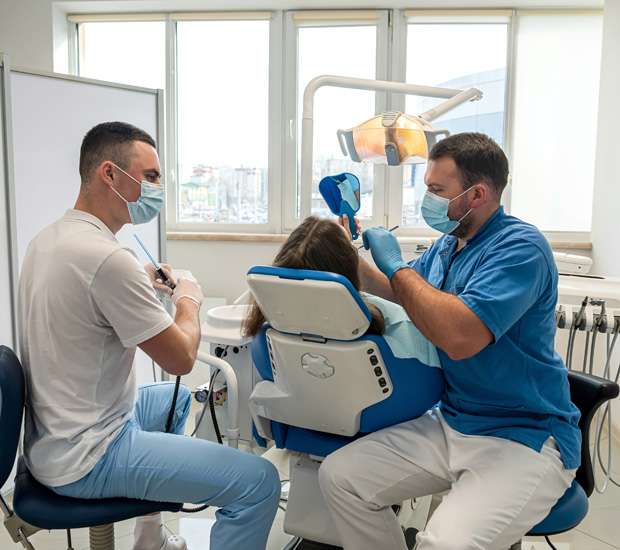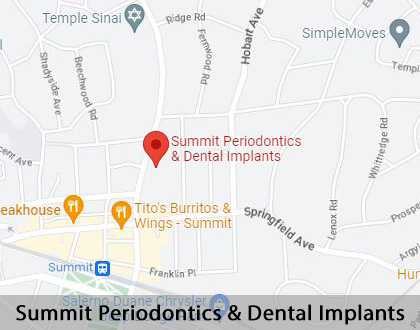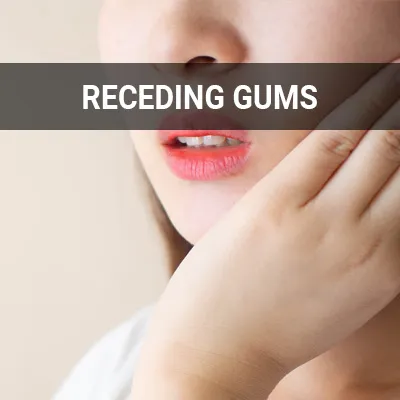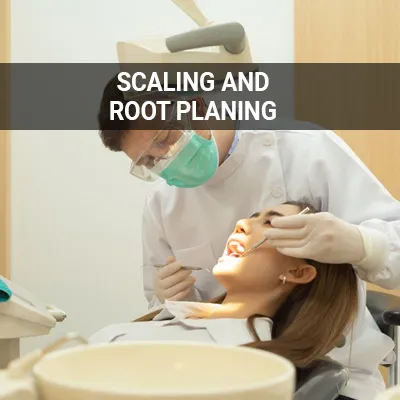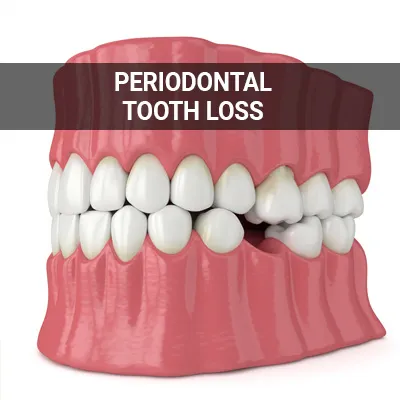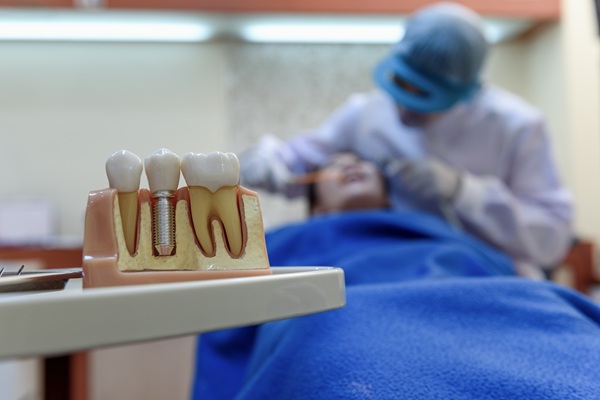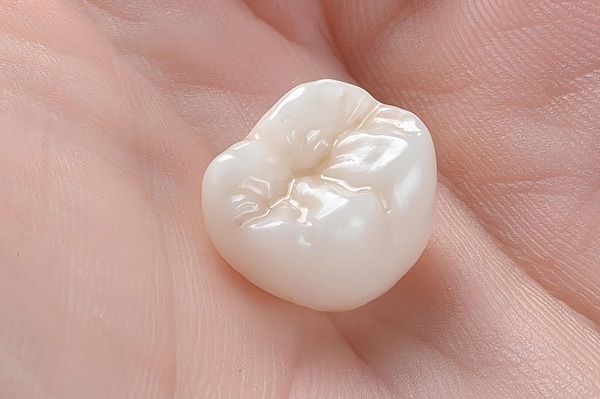Root Surface Debridement Summit, NJ
Root surface debridement is a deep cleaning that removes plaque buildup around the root. The goal is to remove the plaque and stop the development or progression of gum disease. If it has been a while since you have seen the dentist or are suffering from bleeding or inflamed gums, we may recommend a root surface debridement. This treatment option is often necessary before we complete a regular check-up and cleaning.
Root surface debridement is available at Summit Periodontics & Dental Implants in Summit and the surrounding area. Call us at (908) 219-6664 to schedule an appointment to evaluate your oral health.
What is Root Surface Debridement
For most people, basic cleaning is enough to prepare the teeth for a routine check-up. However, extensive tartar and plaque may need removal for patients who have avoided dental visits before moving forward. This procedure is called root surface debridement.
A root surface debridement is when the root surface gets smoothed out, and we remove plaque, tartar, and bacteria. Research from a study in the British Dental Journal shows it is the primary treatment option for managing chronic periodontitis - a common form of gum disease marked by persistent inflammation caused by large amounts of plaque accumulation. This build-up requires removal before our staff can do a complete cleaning and exam.
“A root surface debridement is when the root surface gets smoothed out, and we remove plaque, tartar, and bacteria.”
Benefits of Root Surface Debridement
A root surface debridement has several benefits. First, it helps to stabilize a patient's oral health by improving the health of the gums. Second, if a patient commits to brushing, flossing, and regular dental appointments, a root surface debridement can help maintain long-term success.
Additionally, when the root surface gets smoothed out, it is less susceptible to any bacteria that may want to collect there. It also improves bad breath and the ability to chew food easily. Most importantly, a roof surface debridement increases the chances of keeping natural teeth.
“A root surface debridement has several benefits.”
Preparing for Treatment
A root surface debridement can be uncomfortable. Patients may want to take an over-the-counter painkiller about an hour before the procedure. Our dentist may suggest a pretreatment antibiotic if underlying medical conditions put them at higher risk for infection. We typically use a local anesthetic before starting the treatment to make the procedure more comfortable.
We recommend asking any questions prior to the day of the procedure. We will discuss all treatment and preparation protocols ahead of time. Patients should also be aware of any risks and relay all medical and dental information, including medications they are taking to ensure the procedure runs safely.
“We typically use a local anesthetic before starting the treatment to make the procedure more comfortable.”
Check out what others are saying about our dental services on Yelp: Root Surface Debridement in Summit, NJ
The Treatment Process
A root surface debridement is a much more intensive process than regular dental cleaning. Once we adequately numb the area, we will begin removing plaque and tartar around the root surface. This involves a combination of handheld instruments and an ultrasonic device that uses vibrations and water to clean the teeth. Once complete, the dentist will properly examine the teeth and ensure they are free from excess plaque and tartar.
Sometimes, a root surface debridement requires multiple appointments scheduled a week or two apart. If the patient's treatment area involves just one part of the mouth, we will likely finish in one visit. However, if they have more widespread issues, the dentist will often do a quarter or half of the mouth during each visit. That means up to four visits may be necessary to complete the root surface debridement.
“Once we adequately numb the area, we will begin removing plaque and tartar around the root surface.”
Questions Answered on This Page
Q. What is a root surface debridement?
Q. What are the benefits of a root surface debridement?
Q. How do you prepare for a root surface debridement?
Q. What happens during a root surface debridement?
Q. When is a root canal necessary?
People Also Ask
Q. What are some additional risk factors for receding gums?
Q. What is the difference between scaling and root planing?
Q. What are the advantages of a periodontal teeth cleaning?
Q. What are the causes of oral inflammation?
Q. What are some conditions linked to gum health?
Q. What are the most common cause of periodontal tooth loss?
Postprocedure and Recovery
Following a root surface debridement, patients can expect to feel some tenderness in the gums. For patients who experience significant discomfort, our staff will recommend or prescribe certain medications or a mouthwash to address pain. In addition, warm salt water rinses can be helpful to treat tenderness. A subsequent appointment allows the dentist to examine the teeth and gums for cavities and signs of any other decay or damage.
Once the teeth are at their optimal level of cleanliness, the patient will need to work to maintain them. Patients need to brush twice a day with a soft toothbrush to keep plaque and tartar at bay. Daily flossing will also help remove plaque from between the teeth. By practicing good oral hygiene and seeing the dentist regularly, patients can avoid another debridement.
“A subsequent appointment allows the dentist to examine the teeth and gums for cavities and signs of any other decay or damage.”
Frequently Asked Questions
Q. When do you need root surface debridement?
A. When plaque and tartar have built up around the tooth root, a root surface debridement will provide a deep clean of the infected area. If left untreated, the space between the tooth and the gum will form a pocket where plaque and tartar accumulate. That can lead to advanced gum disease and potential tooth loss.
Q. Can you eat after a root surface debridement?
A. Your mouth and gums may feel a bit sore after a root surface debridement. Stick to a diet of soft foods for a few days to give your teeth and gums a chance to heal. There is no need to restrict your diet otherwise.
Q. How long does it take for gums to heal after a root surface debridement?
A. It will take about a week or two for the gums to heal and inflammation to go down. Once you have recovered, you will come back to the office for a check-up to remove any remaining plaque or tartar. Often the teeth are polished as well.
Q. Does a root surface debridement hurt?
A. You will experience some discomfort during the procedure. However, a local anesthetic can make it more tolerable. Afterward, you should only feel some tenderness in your gums.
Q. What can root surface debridement help prevent?
A. The main purpose of root surface debridement is to stop the development or progression of gum disease. Patients who have excessive plaque and tartar present on the teeth, tooth roots, or gums are at high risk of gum or periodontal disease, which may be irreversible. A root surface debridement can help prevent these conditions when done early.
Start Feeling Better – Visit Us Today
By visiting us as soon as possible, our team can help get you the professional treatment you need. Instead of waiting around and allowing the symptoms to get worse, we can provide you with treatment options.
Definitions
Learn More About Root Surface Debridement
Root surface debridement can help you get your oral health back on track. Neglecting your gums can set you up for more significant health problems in the future. Let our staff help you achieve a healthy smile. Call Summit Periodontics & Dental Implants at 908-219-6664 to schedule an appointment.
Helpful Related Links
- American Academy of Periodontology (AAP). American Academy of Periodontology (AAP). 2023
- Center for Disease Control and Prevention (CDC), Periodontal Disease Page. Center for Disease Control and Prevention (CDC), Periodontal Disease Page. 2023
- WebMD, What Is a Periodontist?. WebMD, What Is a Periodontist?. 2023
About our business and website security
- Summit Periodontics & Dental Implants was established in 2015.
- We accept the following payment methods: American Express, Cash, Check, Discover, MasterCard, and Visa
- We serve patients from the following counties: Union County, Morris County and Essex County
- We serve patients from the following cities: Summit, Chatham, New Providence, Springfield Township, Maplewood, Berkeley Heights, Madison, Westfield, Millburn and Short Hills
- Norton Safe Web. View Details
- Trend Micro Site Safety Center. View Details
Back to top of Root Surface Debridement
